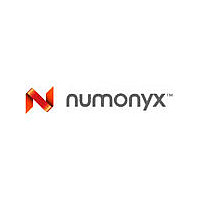NAND01GW3B2CN6E NUMONYX, NAND01GW3B2CN6E Datasheet - Page 31

NAND01GW3B2CN6E
Manufacturer Part Number
NAND01GW3B2CN6E
Description
IC FLASH 1GBIT 48TSOP
Manufacturer
NUMONYX
Specifications of NAND01GW3B2CN6E
Format - Memory
FLASH
Memory Type
FLASH - Nand
Memory Size
1G (128M x 8)
Interface
Parallel
Voltage - Supply
2.7 V ~ 3.6 V
Operating Temperature
-40°C ~ 85°C
Package / Case
48-TSOP
Cell Type
NAND
Density
1Gb
Access Time (max)
25us
Interface Type
Parallel
Boot Type
Not Required
Address Bus
8b
Operating Supply Voltage (typ)
3.3V
Operating Temp Range
-40C to 85C
Package Type
TSOP
Program/erase Volt (typ)
2.7 to 3.6V
Sync/async
Asynchronous
Operating Temperature Classification
Industrial
Operating Supply Voltage (min)
2.7V
Operating Supply Voltage (max)
3.6V
Word Size
8b
Number Of Words
128M
Supply Current
30mA
Mounting
Surface Mount
Pin Count
48
Lead Free Status / RoHS Status
Lead free / RoHS Compliant
Speed
-
Lead Free Status / RoHS Status
Lead free / RoHS Compliant, Compliant
Available stocks
Company
Part Number
Manufacturer
Quantity
Price
Company:
Part Number:
NAND01GW3B2CN6E
Manufacturer:
Numonyx
Quantity:
5
Part Number:
NAND01GW3B2CN6E
Manufacturer:
ST
Quantity:
20 000
NAND01G-B2B, NAND02G-B2C
6.8
6.8.1
6.8.2
6.8.3
Read status register
The device contains a status register which provides information on the current or previous
program or erase operation. The various bits in the status register convey information and
errors on the operation.
The status register is read by issuing the Read Status Register command. The status
register information is present on the output data bus (I/O0-I/O7) on the falling edge of Chip
Enable or Read Enable, whichever occurs last. When several memories are connected in a
system, the use of Chip Enable and Read Enable signals allows the system to poll each
device separately, even when the Ready/Busy pins are common-wired. It is not necessary to
toggle the Chip Enable or Read Enable signals to update the contents of the status register.
After the Read Status Register command has been issued, the device remains in read
status register mode until another command is issued. Therefore if a Read Status Register
command is issued during a random read cycle a new Read command must be issued to
continue with a page read operation.
The status register bits are summarized in
conjunction with the following text descriptions.
Write protection bit (SR7)
The write protection bit can be used to identify if the device is protected or not. If the write
protection bit is set to ‘1’ the device is not protected and program or erase operations are
allowed. If the write protection bit is set to ‘0’ the device is protected and program or erase
operations are not allowed.
P/E/R controller and cache ready/busy bit (SR6)
Status register bit SR6 has two different functions depending on the current operation.
During cache program operations SR6 acts as a cache program ready/busy bit, which
indicates whether the cache register is ready to accept new data. When SR6 is set to '0', the
cache register is busy and when SR6 is set to '1', the cache register is ready to accept new
data.
During all other operations SR6 acts as a P/E/R controller bit, which indicates whether the
P/E/R controller is active or inactive. When the P/E/R controller bit is set to ‘0’, the P/E/R
controller is active (device is busy); when the bit is set to ‘1’, the P/E/R controller is inactive
(device is ready).
P/E/R controller bit (SR5)
The program/erase/read controller bit indicates whether the P/E/R controller is active or
inactive. When the P/E/R controller bit is set to ‘0’, the P/E/R controller is active (device is
busy); when the bit is set to ‘1’, the P/E/R controller is inactive (device is ready).
Table 13: Status register
bits. Refer to
Device operations
Table 13
31/61
in












